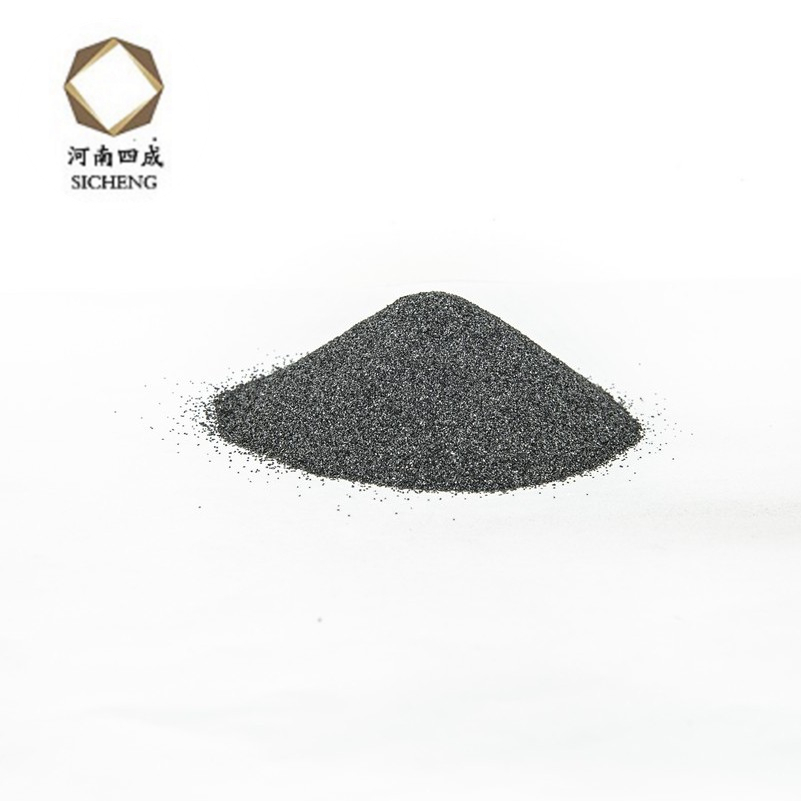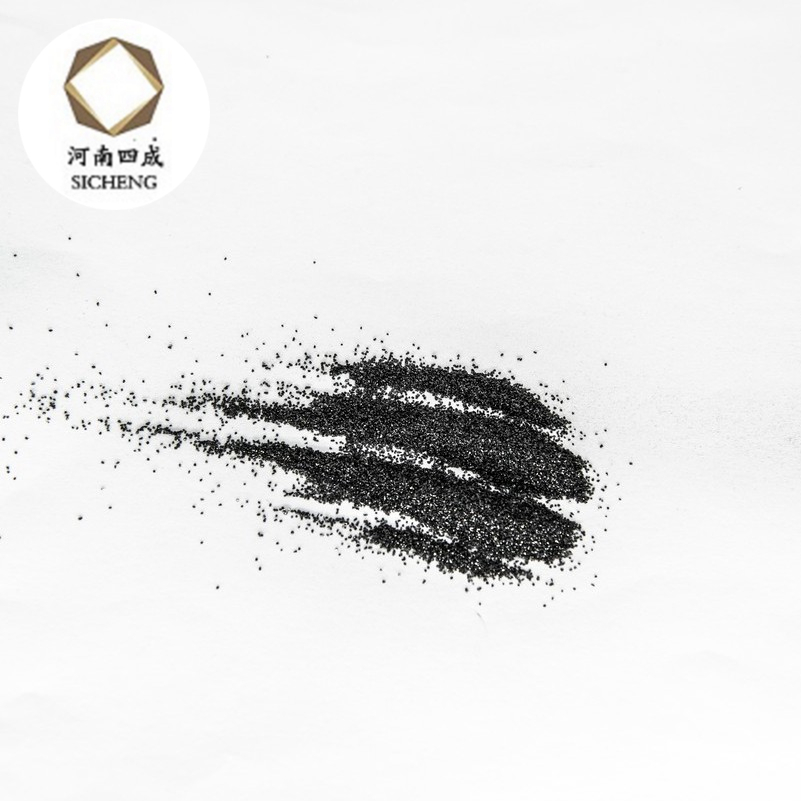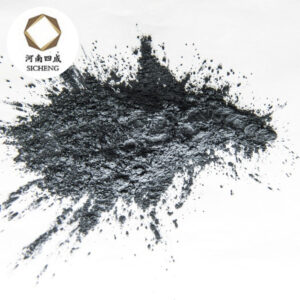Silicon Carbide Abrasives (SiC) is an extremely hard (Mohs 9.1 / 2550 Knoop) human-made mineral that possesses high thermal conductivity and high strength at elevated temperatures (at 1000°C, SiC is 7.5 times stronger than Al2O3). SiC has a modulus of elasticity of 410 GPa, with no decrease in strength up to 1600°C, and it does not melt at normal pressures but instead dissociates at 2600°C.
Structure and Properties of Silicon Carbide Abrasives
Silicon carbide exists in about 250 crystalline forms. The polymorphism of SiC is characterized by a large family of similar crystalline structures called polytypes. They are variations of the same chemical compound that are identical in two dimensions and differ in the third. Thus, they can be viewed as layers stacked in a certain sequence.
Alpha silicon carbide (α-SiC) is the most commonly encountered polymorph; it is formed at temperatures greater than 1700 °C and has a hexagonal crystal structure (similar to Wurtzite). The beta modification (β-SiC), with a zinc blende crystal structure (similar to diamond), is formed at temperatures below 1700 °C. Until recently, the beta form has had relatively few commercial uses, although there is now increasing interest in its use as a support for heterogeneous catalysts, owing to its higher surface area compared to the alpha form.
Size Distribution of Silicon Carbide Abrasives
| Grain size | Test sieve that 100% of particles must pass through | Test sieve that may stop a set amount of particles and the resulting amount | Test sieve that must stop a set minimum amount of particles and the resulting amount | When combined, two test sieves must stop a set minimum amount of particles and the resulting amount. | Test sieve that may allow a maximum of 3% of particles to pass through | ||||
| Stage 1: | Stage 2: | Stage 3: | Stage 3 + Stage 4: | Stage 5 | |||||
| Micron | Micron | % | Micron | % | Micron | % | Micron | ||
| #16 | 2000 | 1400 | 0.2 | 1180 | 0.45 | 1180 | 1000 | 0.7 | 850 |
| #20 | 1700 | 1180 | 0.2 | 1000 | 0.45 | 1000 | 850 | 0.7 | 710 |
| #24 | 1180 | 850 | 0.25 | 710 | 0.45 | 710 | 600 | 0.65 | 500 |
| #30 | 1000 | 710 | 0.25 | 600 | 0.45 | 600 | 500 | 0.65 | 425 |
| #36 | 850 | 600 | 0.25 | 500 | 0.45 | 500 | 425 | 0.65 | 355 |
| #40 | 710 | 500 | 0.3 | 425 | 0.4 | 425 | 355 | 0.65 | 300 |
| #46 | 600 | 425 | 0.3 | 355 | 0.4 | 355 | 300 | 0.65 | 250 |
| #54 | 500 | 355 | 0.3 | 300 | 0.4 | 300 | 250 | 0.65 | 212 |
| #60 | 425 | 300 | 0.3 | 250 | 0.4 | 250 | 212 | 0.65 | 180 |
| #70 | 355 | 250 | 0.25 | 212 | 0.4 | 212 | 180 | 0.7 | 150 |
| #80 | 300 | 212 | 0.25 | 180 | 0.4 | 180 | 150 | 0.65 | 125 |
| #90 | 250 | 180 | 0.2 | 150 | 0.4 | 150 | 125 | 0.65 | 106 |
| #100 | 212 | 150 | 0.2 | 125 | 0.4 | 125 | 106 | 0.65 | 75 |
| #120 | 180 | 125 | 0.2 | 106 | 0.4 | 106 | 90 | 0.65 | 63 |
| #150 | 150 | 106 | 0.15 | 75 | 0.4 | 75 | 63 | 0.65 | 45 |
| #180 | 125 | 90 | 0.15 | 63 | 0.4 | 63 | 53 | 0.65 | – |
| #220 | 106 | 75 | 0.15 | 53 | 0.4 | 53 | 45 | 0.65 | – |










Tyler (verified owner) –
Good service.